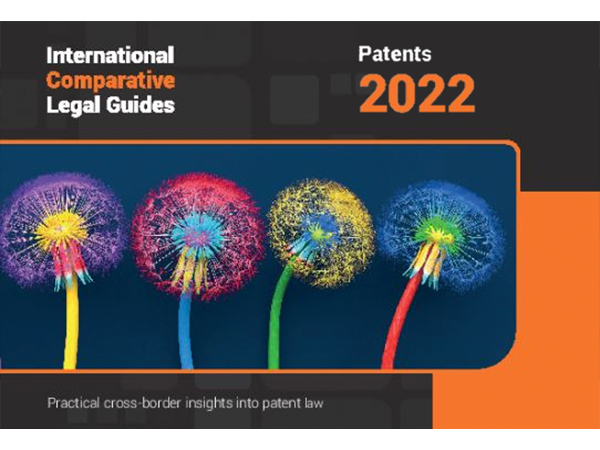
Intellectual Property
Viewpoints
Filter by:
DTSA and Ex Parte Seizure – Lessons from the First Ex Parte Seizure Under The DTSA
August 21, 2017 | Blog | By Michael Renaud, Nick Armington
The Defend Trade Secrets Act (DTSA) Ex Parte Seizure mechanism allows victims of trade secret misappropriation to quickly prevent further dissemination of confidential information by asking a court to direct federal marshals to seize stolen trade secret material and secure that material during the pendency of a formal DTSA case.
Read more
District Courts Remain Split on TC Heartland and Waiver of Improper Venue Defense
August 21, 2017 | Blog | By Brad M Scheller
The Supreme Court’s decision five months ago in TC Heartland v. Kraft Food Group Brands was a sea change in the way courts interpret venue for patent infringement cases.
Read more
Federal Circuit Says PTO Submissions Can Waive Privilege to Future Communications
August 15, 2017 | Blog
On July 20, 2017, the United States Court of Appeals for the Federal Circuit in In re OptumInsight denied OptumInsight’s petition for writ of mandamus on privilege waiver.
Read more
ITC Denies Suspension or Temporary Rescission of Remedial Orders After PTAB Invalidates Patents at Issue
July 28, 2017 | Blog | By Michael Renaud
In a first of its kind decision with important ramifications for patentees, the U.S. International Trade Commission (“ITC”) denied a petition to suspend or temporarily rescind remedial orders issued in Investigation No. 337-TA-945 pending appeal of the Patent Trial and Appeal Board’s (“PTAB”) separate finding that the patent claims at issue are invalid.
Read more
Federal Circuit Thoroughly Reverses District Court Findings of Velcade® Patent Obviousness
July 26, 2017 | Blog | By Adam Samansky, Joe Rutkowski
On July 17, 2017, the United States Court of Appeals for the Federal Circuit reversed, in a precedential opinion in Millennium Pharmaceuticals, Inc. v. Sandoz, Inc., No. 2015-2066 (Fed. Cir. July 17, 2017), a district court ruling that claims of a patent directed to the Velcade® cancer treatment drug compound were invalid as obvious.
Read more
Extension of U.S. Patent and Trademark Office’s Cancer Immunotherapy Pilot Program
June 28, 2017 | Blog | By Terri Shieh-Newton
On June 19, 2017, the U.S. Patent and Trademark Office (USPTO) announced that it would be extending the Cancer Immunotherapy Pilot Program, which permits patent applications pertaining to cancer immunotherapy to be examined in an expedited fashion.
Read more
Federal Circuit Puts the Brakes on PTAB Final Written Decision For Procedural APA Violation
June 28, 2017 | Blog | By William Meunier , Peter Cuomo
In EmeraChem Holdings LLC v. Volkswagen Group of Am. Inc., the Federal Circuit reminded the PTAB that it must abide by the APA’s requirements of adequate notice and an opportunity to respond when conducting a post-grant review.
Read more
ITC Issues Public Commission Opinion Clarifying Methodology for Allocating Domestic Industry Expenses and Issuing Exclusion Order against Product with Medical Applications
June 23, 2017 | Blog | By Daniel Weinger
On May 17, 2017, the International Trade Commission (ITC) reversed an ALJ’s ruling and found a violation of Section 337 in Certain Air Mattress Systems, Components Thereof and Methods of using the Same (“Certain Air Mattress Systems”), Inv. No. 337-TA-971, due to the importation of certain air mattresses, and components of air mattresses, by the named respondents.
Read more
Supreme Court to Decide the Constitutionality of Inter Partes Review
June 22, 2017 | Blog | By Michael Renaud, Andrew DeVoogd
In a move that could drastically change the patent law landscape, the United States Supreme Court recently granted certiorari in Oil States Energy Services LLC v. Greene’s Energy Group LLC, No. 16-712, to answer the question whether the inter partes review (IPR) process violates the U.S. Constitution by “extinguishing private property rights through a non-Article III forum without a jury.”
Read more
Calculating Patent Term Adjustment: Part 1
June 22, 2017 | Blog | By Christina Sperry, Elissa Kingsland
This article is first in a series focusing on various issues related to Patent Term Adjustment. Part 1 is a general overview of how to calculate patent term adjustment, without addressing the numerous factors that can affect patent term adjustment that will be examined in future articles.
Read more
Amgen v. Sandoz: The Supreme Court’s First Biosimilars Ruling
June 14, 2017 | Blog | By Thomas Wintner, Joe Rutkowski
In a unanimous decision issued on June 12, 2017, the Supreme Court for the first time interpreted key provisions of the 2010 Biologics Price Competition and Innovation Act (“BPCIA”).
Read more
PTAB Invalidates Two Cisco Patents Found Valid and Infringed at the ITC
June 14, 2017 | Blog
The Patent Trial and Appeal Board (“PTAB”) issued Final Written Decisions regarding Cisco’s U.S. Patent Nos. 6,377,577 (the “’577 Patent”) and 7,023,853 (the “’853 Patent”) on May 25, 2017 and U.S. Patent No. 7,224,668 (the “’668 Patent”) on June 1, 2017.
Read more
Pumping Up Exceptional Cases Under the Octane Fitness Standard
June 13, 2017 | Blog | By Andrew DeVoogd
A flurry of activity from various courts this past week on “exceptional cases” under Section 285 of the Patent Act provided notable guidance for practitioners and patent owners, with a particular emphasis on the motivation and conduct of the litigants.
Read more
Supreme Court Overrules and Rewrites 25 Years of Federal Circuit Law on Patent Exhaustion
May 31, 2017 | Blog | By Andrew DeVoogd
In keeping with recent erosion of patent rights, patent owners’ power to control the post-sale use and sale of their patented products was severely limited this week by the U.S. Supreme Court in the highly anticipated case regarding the patent exhaustion doctrine, Lexmark Int’l, Inc. v. Impression Prods., Inc., No. 15-1189.
Read more
The DTSA and Inevitable Disclosure
May 30, 2017 | Blog | By Michael Renaud, Nick Armington
A recent decision in the Northern District of Illinois gave life to the inevitable disclosure doctrine under the Defend Trade Secrets Act.
Read more
Patent Litigation Venue: Supreme Court Clarifies Venue Statutes in TC Heartland v. Kraft Foods.
May 24, 2017 | Blog | By Matthew Hurley, Brad M Scheller , Serge Subach
The U.S. Supreme Court announced its ruling in TC Heartland v. Kraft Foods Group Brands LLC on May 22, 2017, a patent infringement case that has garnered national attention for its implications on venue.
Read more
You Can Not Claim What you Don't Possess - Federal Circuit Holds Fiber Optic Claims Invalid under Section 112
May 18, 2017 | Blog | By John Bauer, Peter Cuomo
On May 10, 2017 and following a Patent Trial and Appeal Board (PTAB) reexamination decision upholding certain claims, the United States Court of Appeals for the Federal Circuit ruled in Cisco Systems, Inc. v. Cirrex Systems, LLC that all of the appealed claims of a fiber optic patent held by Cirrex are invalid for lack of a written description support required by 35 U.S.C. § 112.
Read more
Amgen Sues Coherus Under BPCIA After Completing Patent Dance
May 17, 2017 | Blog | By Thomas Wintner, Joe Rutkowski
On May 10, 2017, Amgen filed a complaint in the District of Delaware asserting that, under section 35 U.S.C. § 271(e)(2)(C)(i) of the Biologics Price Competition and Innovation Act (“BPCIA”), Coherus infringed Amgen’s U.S. Patent No. 8,273,707 (the “’707 patent”) by filing an abbreviated Biologic License Application (“aBLA”) for a biosimilar version of Amgen’s Neulasta (pegfilgrastim) product.
Read more
Federal Circuit Expands Scope of Prosecution Disclaimer to IPR Proceedings
May 17, 2017 | Blog | By Andrew DeVoogd
In its opinion in Aylus Networks, Inc. v. Apple Inc., the Federal Circuit expanded the scope of prosecution disclaimer to statements made by a patent owner during Inter Partes Review (IPR) proceedings.
Read more
USPTO eMod Project To Improve E- Filing/Managing Patent Applications
May 16, 2017 | Blog | By Christina Sperry
The U.S. Patent and Trademark Office (USPTO) is implementing eCommerce Modernization (eMod), as discussed at a Patent Quality Chat webinar on May 9, 2017.
Read more
Explore Other Viewpoints:
- Data Centers & Digital Infrastructure
- AI: The Washington Report
- Antitrust
- Appellate
- Arbitration, Mediation & Alternate Dispute Resolution
- Artificial Intelligence
- Awards
- Bankruptcy & Restructuring
- California Land Use
- Cannabis
- Class Action
- Complex Commercial Litigation
- Construction
- Consumer Product Safety
- Corporate Governance (ESG)
- Cross-Border Asset Recovery
- DEI Legal Developments
- Debt Financing
- Direct Investing (M&A)
- Diversity
- EB-5 Financing
- Education & Nonprofits
- Employment
- EnforceMintz
- Environmental (ESG)
- Environmental Enforcement Defense
- Environmental Law
- Environmental, Social, and Corporate Governance (ESG)
- FDA Regulatory
- False Claims Act
- Federal Circuit Appeals
- Financial Institution Litigation
- Government Law
- Growth Equity
- Health Care
- Health Care Compliance, Fraud and Abuse, & Regulatory Counseling
- Health Care Enforcement & Investigations
- Health Care Transactions
- Health Information Privacy & Security
- IP Due Diligence
- IPRs & Other Post Grant Proceedings
- Immigration
- Impacts of a New US Administration
- Insolvency & Creditor Rights Litigation
- Institutional Investor Class Action Recovery
- Insurance & Financial Services
- Insurance Consulting & Risk Management
- Insurance and Reinsurance Problem-Solving & Dispute Resolution
- Intellectual Property
- Investment Funds
- Israel
- Licensing & Technology Transactions
- Life Sciences
- Litigation & Investigations
- M&A Litigation
- ML Strategies
- Medicare, Medicaid and Commercial Coverage & Reimbursement
- Mergers & Acquisitions
- Patent Litigation
- Patent Prosecution & Strategic Counseling
- Pharmacy Benefits and PBM Contracting
- Portfolio Companies
- Privacy & Cybersecurity
- Private Client
- Private Equity
- Pro Bono
- Probate & Fiduciary Litigation
- Products Liability & Complex Tort
- Projects & Infrastructure
- Public Finance
- Real Estate Litigation
- Real Estate Transactions
- Real Estate, Construction & Infrastructure
- Retail & Consumer Products
- Securities & Capital Markets
- Securities Litigation
- Social (ESG)
- Special Purpose Acquisition Company (SPACs)
- Sports & Entertainment
- State Attorneys General
- Strategic IP Monetization & Licensing
- Sustainable Energy & Infrastructure
- Tax
- Technology
- Technology, Communications & Media
- Technology, Communications & Media Litigation
- Trade Secrets
- Trademark & Copyright
- Trademark Litigation
- Unified Patent Court (UPC)
- Value-Based Care
- Venture Capital & Emerging Companies
- White Collar Defense & Government Investigations
- Women's Health and Technology







